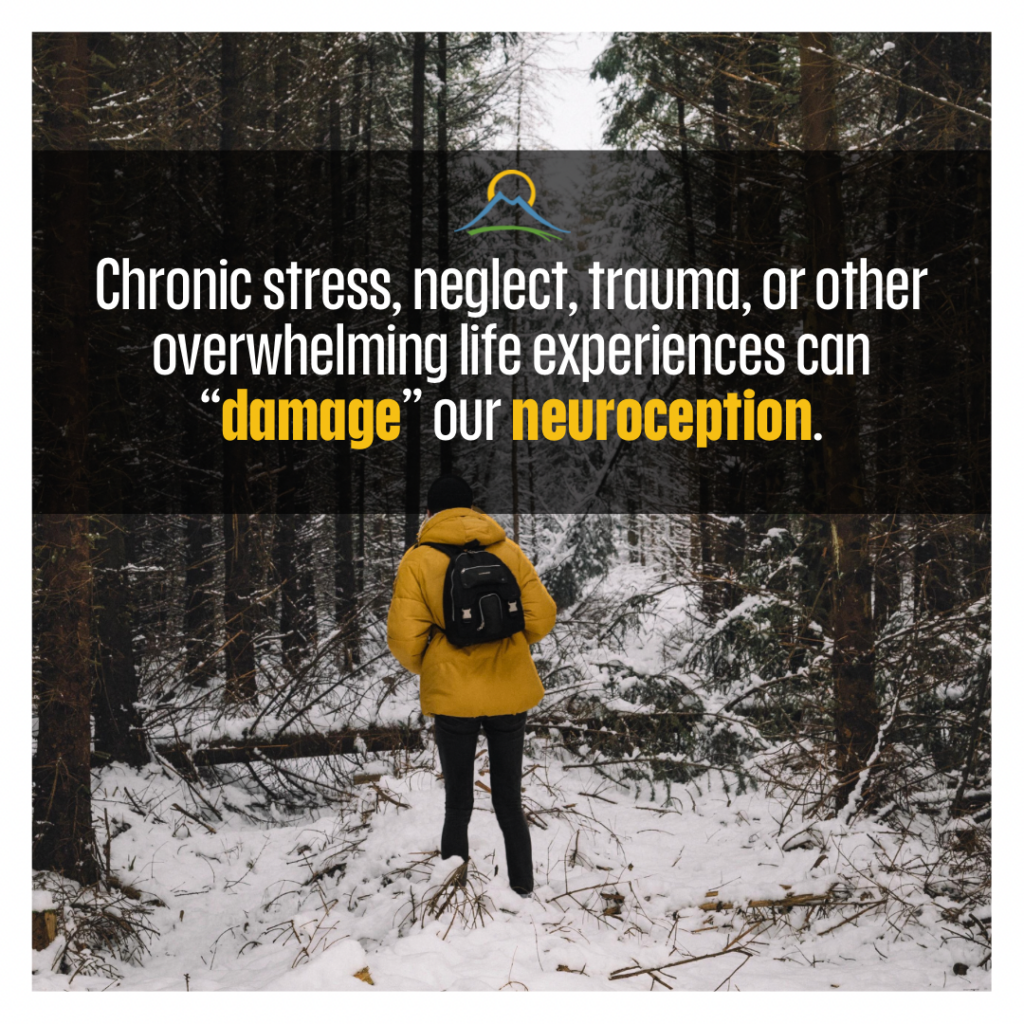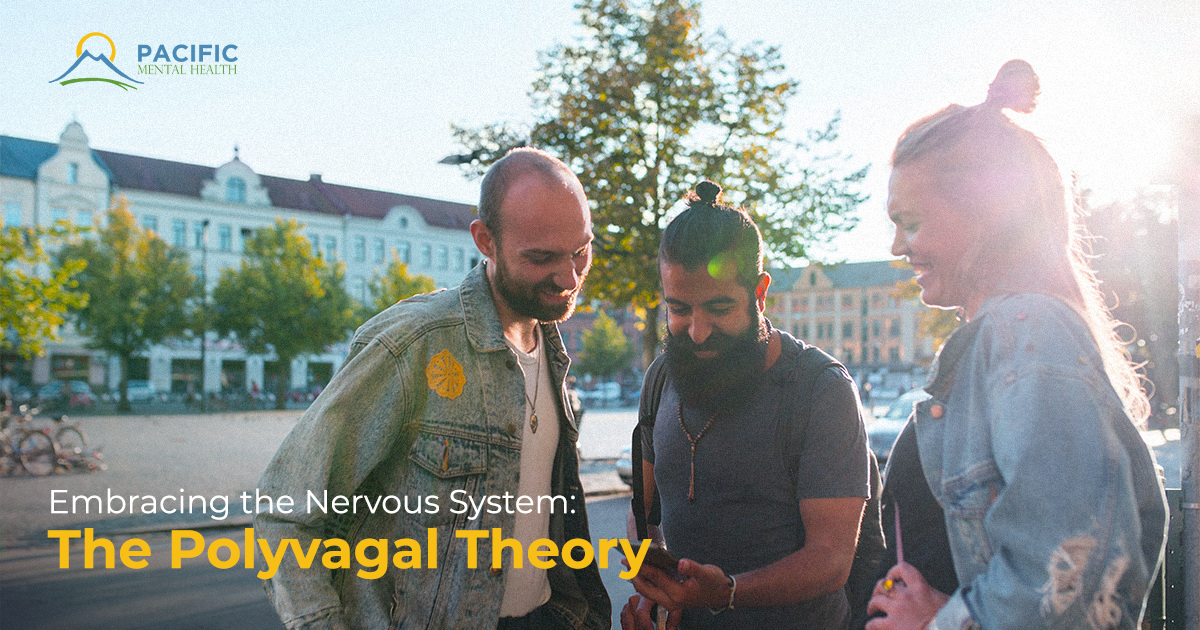Have you ever wondered what feelings are and where they come from? Why are they so powerful? According to the polyvagal theory, the state of our nervous system is determined by which part of our nervous system is engaged (Dana, 2018). Therapy helps to understand our nervous system and brings this unconscious, implicit activity into our awareness, opening a way to work with our nervous system rather than reacting to it.

Polyvagal Theory
Have you ever been in a situation where you began to feel anxious, overwhelmed, or unsafe, and you did not know why? Stephen Porges, who developed polyvagal theory, coined the term neuroception to describe our nervous system’s ability to scan the environment to look for signs of safety and danger (2004; The Trauma Foundation, n.d.).
This is like a built-in alarm system humans have to protect us from danger (Dana, 2018). When our nervous system picks up signs of safety, we are in the ventral vagus part of our nervous system. Here we feel safe, secure, and connected to ourselves and others (Dana, 2018).
When our nervous system becomes unsure of our environment or picks up signs of danger, we move into the sympathetic part of our nervous system. Here we are alert, and energy builds within our system to act (Dana, 2018). This is where the fight or flight response comes from. If we cannot resolve the experience that activated us to move into our sympathetic nervous system, our bodies protectively move us into the dorsal vagal part of our nervous system. Here we shut down, disconnect, and collapse (Dana, 2018).
Chronic stress, neglect, trauma, or other overwhelming life experiences can “damage” our neuroception. Then, we can get stuck in a place where our nervous system perceives danger when there is none or fails to perceive danger when it is present.
Polyvagal-Informed Therapy

A polyvagal-informed therapist can help clients understand their nervous system and why some situations or relationships cause distress or uncomfortable feelings. Deb Dana explains that this lens “provides a physiological and psychological understanding of how and why clients move through a continual cycle of mobilization, disconnection, and engagement” (2018, p. xvii).
The responses of our nervous system take place at a subconscious level and dictate how we feel. In therapy, these experiences can be brought into our conscious awareness, and we can work with our nervous system rather than just reacting to it. The protective function of our nervous system often keeps us isolated and unable to connect with others (Dana, 2018). Polyvagal-informed therapy opens a path to rewire protection-seeking patterns and move us toward connection and healing.
Hope, Healing, and Connection
Humans come into this world wired to connect with others; we are literally “looking for someone looking for us” (Thompson, 2015, p. 138). This need for connection does not change or dissipate as we grow and enter adulthood. Working with a polyvagal-informed therapist can help heal how our nervous system perceives the world.
In polyvagal-informed therapy, clients discover what triggers them and keeps them from the connection they long for and need (Dana, 2018). You find that resilience grows, and the ability to regulate their emotional state increases. Rather than getting stuck in a place where we are anxious, unsure, or in utter collapse, we can flexibly move from one state to another (Dana, 2018). Their ability to connect with others in healthy ways anchors them in a sense of safety and security.
Can This Help You?
If you feel anxious, depressed, stuck in life, or disconnected polyvagal-informed therapy can help put you on the path to hope, healing, and connection. If you cannot regulate your emotional state and want to learn to work with your nervous system, please reach out for help. You are not alone in your struggle. Therapy can help you begin to work with your nervous system, increase your resilience, and connect with others.
References
- Thompson, C. (2015). The soul of shame: Retelling the stories we believe about ourselves. InterVarsity Press.
- Dana, D. (2018). The polyvagal theory in therapy: Engaging the rhythm of regulation. W.W. Norton & Company, Inc.
- The Trauma Foundation (n.d.). Trauma and the nervous system: A polyvagal perspective [Video]. YouTube. https://www.youtube.com/watch?v=ZdIQRxwT1I0
- Porges SW. (2004). Neuroception: a subconscious system for detecting threats and safety. Zero to Three, 24(5), 19–24.








0 Comments